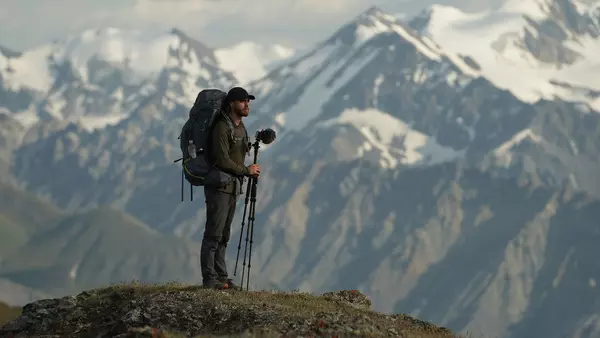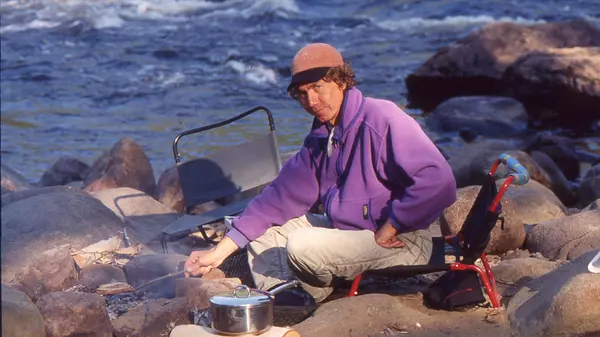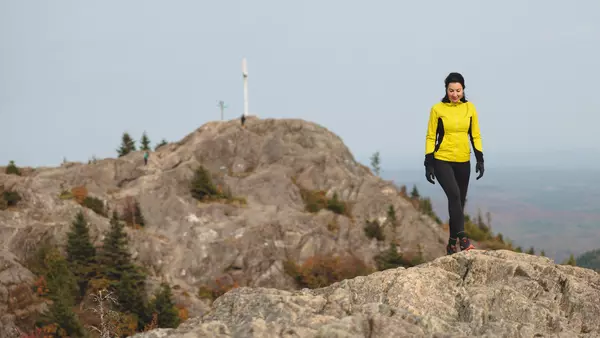Technical clothing is designed to provide optimal protection and comfort when exploring the outdoors. They are typically made from specialized materials that are designed to withstand the elements. Technical clothing is designed to keep you warm, dry and comfortable in any environment.
They are available for a variety of activities including hiking, camping, skiing, snowboarding, climbing, etc. The materials used in making these garments are usually lightweight and breathable so you can move freely without feeling restricted.

Fabrics and technologies
The development of technical clothing involves technologies designed to provide superior protection and comfort. Technologies including water resistant materials, breathable membranes, moisture wicking fabrics and insulation layers are used to enhance performance. For intense sports activities, fabrics must be specially designed to wick away perspiration and keep the skin cool, thus strongly influencing the comfort it provides.
Here are some examples of materials used in Chlorophylle garments :

StormfleeceTM :
This fabric offers a protective, water-resistant outer layer. The soft sherpa fleece interior helps to keep and distribute heat properly while a channel system provides excellent moisture management. It is an environmentally friendly product with a densely woven, single layer surface that helps reduce microfibre loss in the wash. In addition, no lamination process is required during production, making it energy efficient. An ideal material for all-weather activities such as hiking, mountaineering, cycling and many others.
Stormfleece can be found in the following garments :

Traction DWR :
Made from 94% nylon and 6% spandex, Traction DWR fabric has all the technical properties you'd expect from a hiking pant. A perfect balance between lightness and robustness, its DWR water repellent finish gives it excellent water resistance. It is also breathable and abrasion resistant. It dries quickly and also has all the stretch required for maximum comfort while offering sun protection by construction and therefore without the addition of chemicals (50 SPF). A tough fabric perfect for your hiking trips.
You can find Traction DWR fabric in the following garments:

3L recycled DWR :
The 3L recycled stretch fabric made from 100% recycled polyester with DWR water repellent and 20K/20K breathable membrane. It has excellent abrasion resistance, is windproof and quick drying. Three-layer garments feel like a single layer. This is because the three layers are laminated together: the outer fabric, the membrane and the lining. Lightweight, compressible and durable, they are ideal for any outdoor activity that requires total protection.
Find 3L recycled DWR fabric in the following garments:
Baffin men's and women's collection
20k/20k .... What does that mean?
When reading the technical characteristics of a garment, you may have already wondered what these numbers mean: 10k/10k, 15k/15k or 20k/20k. They are actually used to evaluate the waterproof and breathable properties of fabrics. We can test the waterproofness of a fabric by measuring the height that water has to reach to produce the first drops that pass through it, using a tube (column) filled with water. The waterproofness of the fabric is determined by the water level; the higher it is, the more resistant it will be to the weather. So if the garment has a rating of 20k, that's 20,000mm of water before it starts to penetrate the fabric.
Breathability tests, like water resistance, are done in a laboratory. The breathability of a material indicates its ability to wick moisture away from the body. Fabrics with a higher number are more breathable. For example, a 20k fabric allows 20,000 grams of water vapour to pass through one square metre of fabric in 24 hours.
Water resistance
6 000 - 10 000 mm: Provides resistance to light rain and moderate snow showers
11 000 - 15 000 mm: Provides resistance to moderate rain and snow showers
16 000 - 20 000 mm: Provides excellent resistance to long rides in heavy rain and wet snow
20 000 mm et + : Provides optimum protection in heavy rain and wet snow
Clothing that fits your needs and activities.
Technical clothing is designed to fit comfortably and move with you, so that you can perform at your best. The fabrics used in technical clothing are usually stretchy and flexible, so they can be adjusted to fit your body perfectly. This ensures that the garment will not restrict your movement or hinder you when you are active. Technical garments are also designed to be versatile so that they can be used for multiple activities.

Clothing to wear in hiking
When it comes to outdoor clothing, the layering system is the best choice for your hikes. This system consists of three layers: a base layer, an insulation layer and an outer layer. Each of these layers of clothing has a specific function and works together to keep you warm and dry in all weather conditions.
Read more about choosing your base layers.
Read more about the layering system.

Clothing for snowshoeing
Snowshoeing is a great way to explore the outdoors in winter, but it is important to have the right clothing for this activity. Technical clothing for snowshoeing should be light, breathable and waterproof. It should also provide insulation and protection against wind and cold weather. A good base layer is essential for snowshoeing.

Clothing for cross-country skiing
Cross-country skiing is a full-body cardiovascular exercise that will quickly make you hot. To make sure you stay comfortable throughout the activity, we recommend using the layered clothing system (layering system) which can easily be adjusted according to the weather and the level of effort. Choose highly breathable and windproof materials.

Clothing for backcountry and ski touring
When choosing clothing for ski touring, it is important to consider the weather conditions you may encounter. Technical clothing should offer protection from the elements while allowing maximum breathability and mobility. Ski touring requires a combination of lightweight, waterproof outerwear and an insulating layer that can be easily added or removed depending on the weather.

Clothes to wear when downhill skiing or snowboarding
Downhill skiing and snowboarding are two of the most popular winter sports, and it is essential to have the right warm clothing to stay comfortable and at ease while doing your activity. Snowsports clothing is designed to offer superior protection from the elements, provide extra warmth while allowing maximum freedom of movement. Garments equipped with many technical details such as a helmet compatible bonnet, arm vents, snow skirt, multiple storage pockets and much more.

Taking care of your technical clothing
It is important to take care of your outdoor clothing to ensure its longevity. Always follow the manufacturer's instructions for washing and drying. Avoid using fabric softeners as they can reduce the performance of fabrics. In addition, bleach is not recommended, nor are other harsh chemicals for cleaning your technical clothing. Use a mild soap specifically designed for sportswear care. Granger products are an excellent option for keeping your technical and outdoor clothing in top condition. These products are designed to be gentle and harmless to fabrics while providing effective cleaning and protection.
Learn more in our product care section
Discover our technical clothing care products
Blog
View all blog postSign up to get 10% off your first order.
A confirmation email containing your promotional code will be sent to you. If you cannot find it in your inbox, please check your spam folder.
By subscribing, you accept that we will send you emails concerning promotions, events, products and other exclusive advantages that are only available to our subscribers.





